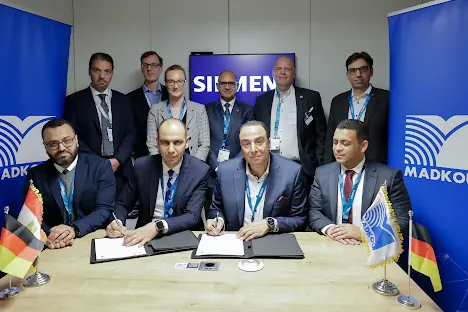The continuing incidence of foodborne diseases and illnesses caused by various contaminants emphasizes the importance of food safety across the globe. To identify the need for continuous monitoring of food safety hazards, global and governmental organizations have laid down guidelines to assess food hazards, promote awareness of food safety across the food value chain and promote public advocacy. Authorities are also diligently monitoring and updating policies and frameworks as per the latest requirements.
Despite regular monitoring, foodborne disease outbreaks are common and result in product recalls. For example, the US FDA (Food and Drug Administration) reported 585 food recalls in 2019, 495 in 2020, and 427 in 2021. These outbreaks result in huge losses to the food and beverage (F&B) industry and lead to brand damage, decreased sales, and other fixed costs for companies.
More importantly, they have a significant impact on human health, result in unnecessary burdens on public health services, and affect the socioeconomic status of countries, especially when there are large-scale outbreaks. This reiterates the need for continuous tracking and detection of food contaminants across the F&B value chain.
Technologies and processes that are currently available for contaminant tracking and detection are time-consuming and require specific infrastructure. Most of them are not globally used due to cost, availability, or awareness.
WHO, in collaboration with the UN FAO, as a part of its efforts to curtail foodborne illness and ensure food safety, promotes awareness of technologies used in food production and contaminant detection and monitoring for better food safety management. Stakeholders are also keen to deploy cost-effective and proven technologies that can help with real-time monitoring and early detection of a potential contaminant. Considering the plethora of physical, chemical, and biological contaminants, there is a need to continuously implement technologies to ensure food safety protocols.
Technologies Enabling Food Contaminant Monitoring and Detection
The past three years have witnessed a continued focus on developing and updating monitoring technologies and detection methods from stakeholders across the F&B ecosystem. Innovations from digital app developers and sensor manufacturers are also customized for use in the F&B industry to provide uninterrupted food safety measures.
Chemical and biochemical detection methods used in the pharma, biotechnology, and life sciences industries are also being trialed for adoption in the F&B industry, especially for the detection of biological pathogens and microbial contaminants. There is a gamut of emerging technologies available that can help overcome the shortcomings of traditional methods. These technologies, used alone or integrated with each other, can provide a holistic food safety approach from farm to fork. Some of the emerging technologies include:
Electronics and Sensors
Electronic tracking and monitoring devices such as RFID and smart sensors are already used by the food industry, especially for chemical and biological contaminants. While the ease in deploying RFID tags and their cost-effectiveness are key drivers for adoption, ensuring longer durability of these tags can increase adoption. Rapid sensing smart sensors provide freedom of design and tracking parameters.
Various color-changing and interactive real-time sensors are being introduced along with touchless/touch-sensitive devices integrated with RFID/IoT tracking and are becoming an integral part of many supply chains and mid-size and large food units. These devices, with digital readouts and automatic alerts, provide a user-friendly approach with high durability and can be used for all types of contaminants detection.
Smart labels and printed electronics are promising technologies that are still in their nascent stages of adoption. These can be directly printed onto food packaging and are resistant to folding, enabling cost-effective, real-time technologies for sensing pH, temperature, gas, and biological agents. Further validation on stability and scalability can facilitate large-scale commercialization.
Digital
Digital technologies such as blockchain, the internet of things (IoT), and artificial intelligence (AI)/machine learning (ML)-based predictive analytics provide efficient data collection and analytics for planning and prevention of potential foodborne illnesses and outbreaks. They act as a real-time communication tool as food products move across the value chain and improve traceability and real-time tracking and help in early product recall in case of potential issues. Digital and analytical technologies help with accurate data capture in food processing units and supply chain and logistics.
Distributed ledger technology, such as blockchain, is increasingly considered by leading F&B companies for improved traceability and tracking. Ease of interoperability across companies is increasing its attractiveness in the food safety ecosystem. However, it’s important to ensure adherence to data transfer regulations and compliance, which are still in their infancy. Standardization of policies and regulations and a potential reduction of implementation costs can increase use by SMEs worldwide.
Integrating RFID tags and smart sensors with IoT platforms (IoT sensors) and digitally connecting over the internet for continuous data analysis monitoring can form a complete food contaminant traceability management system. Increasing 5G rollouts and ease in integration with various communication devices can increase the adoption of IoT sensors in food manufacturing units for traceability and real-time tracking with added benefits of low cost and easier communication.
Electromagnetic Imaging and Detection Technologies
Increasing consumer awareness and government regulations on food quality are key drivers of non-invasive contaminant detection technologies such as electrical, magnetic or Terahertz (THz) sensing and hyperspectral imaging for food inspection. The ability of these technologies to detect any foreign substances, pathogens, chemical variability, and seal or packaging errors quickly with greater accuracy than conventional X-ray systems has increased their attractiveness in the food safety ecosystem.
Many companies are actively involved in testing the effectiveness of THz sensing and hyperspectral imaging. These systems can also effectively identify multiple pathogens simultaneously, making them a potential one-stop detection technology. Efforts to reduce their cost and bulkiness and increase power efficiency can boost adoption in the next three years.
Immunoassays and Molecular Diagnostics
Compared with commonly used culture methods for food pathogen analysis, immunoassays are faster in detection and have better response times. They also have the added advantage of being easily integrated with varied substrates such as microfluidic chips and paper or test strips, which helps test diverse food samples using the best technique.
Immunoassays are robust but prone to sampling errors, especially in protein testing, and would need additional purification steps during testing and detection. Research advances related to sensitivity and minimizing the need for additional steps are key focus areas. If proven successful, they can increase their use for biological contaminant detection.
Molecular diagnostics, including PCR assays commonly used in the pharma and life sciences industry, are gaining momentum in terms of R&D for potential deployment in food safety testing. They offer high sensitivity and selectivity in shorter response times than the current immunological detection methods due to specific binding and amplification processes and are highly sample-sensitive. This can help accurately detect pathogens in complex food samples and reduce false positives. However, they can’t always distinguish between dead and live cells, leading to false counts. Overcoming this issue and ensuring ease of use and cost-effectiveness can position molecular diagnostics as a biological contaminant detection technology of choice.
The Final Word
The need to increase global food production to meet the demands of the population has necessitated food safety measures and preventive techniques to reduce food wastage and spoilage. The COVID-19 pandemic has also increased consumer awareness about health and wellness, underlining the need for effective food safety measures.
As the F&B industry moves toward digitalization and implements a smarter food safety approach, the adoption of smart and real-time detection devices that can provide accurate results quickly while being portable is expected to become mainstream. Additionally, industry convergence and the development of miniaturized, real-time detection technologies for enhanced food safety can help address the incidence of potential foodborne illness outbreaks, ensuring food safety and reducing the socioeconomic burden on nations.
Authored By:
Aarthi Janakiraman, Research Director, TechVision, Frost & Sullivan

Ramya Kannan, Research Analyst, TechVision, Frost & Sullivan

The blog received on Mail from Frost & Sullivan




















